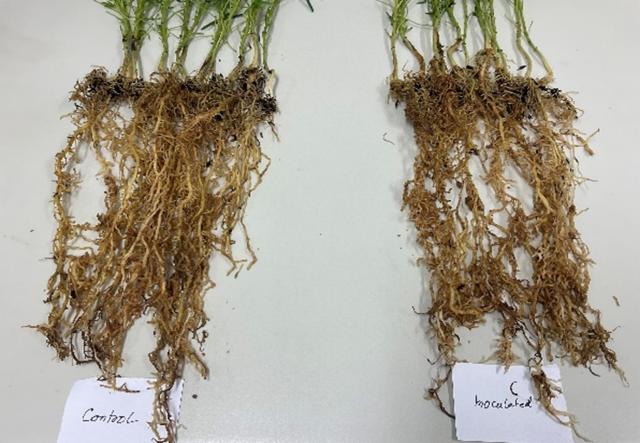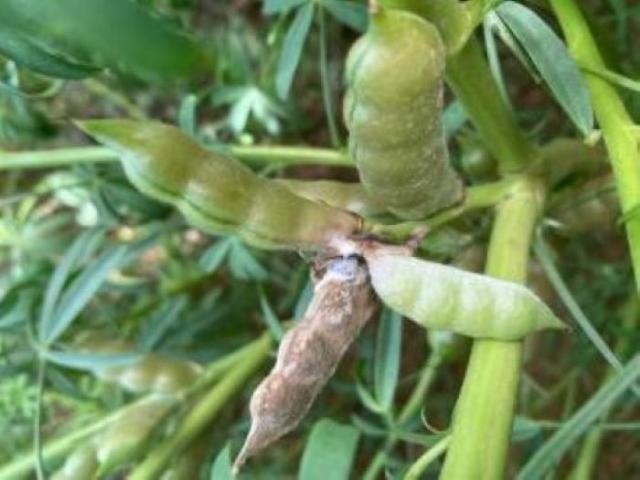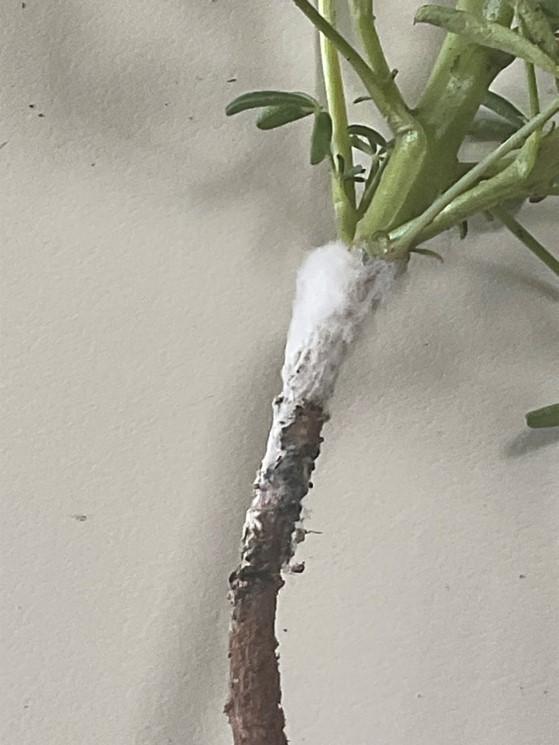Sclerotinia management for narrow leaf lupin crops
At a glance
- Research has shown that foliar fungicide application for control of canopy sclerotinia in lupin resulted in an average yield increase of 11% in trials conducted in the Geraldton port zone in 2021-22. This effect was particularly noticeable in high sclerotinia incidence areas.
- Fungicide applied at a vulnerable crop stage (such as flowering to early pod emergence on the main spike) that precedes or coincides with favourable weather conditions for the sclerotinia pathogen is more likely to be profitable. A wet spring and presence of other diseases will increase the chances of obtaining a yield response from fungicide application for sclerotinia canopy infection.
- Sclerotinia risk is higher in lupin crops grown in paddocks with a previous history of the disease, high plant density, heavy soil type, early canopy closure and good yield potential, especially in seasons where weather is favourable for disease spread. A Grains Research and Development Corporation (GRDC) Lupin sclerotinia disease risk assessment guide has been compiled for the Western region.
- Early research is showing that sclerotinia basal infection may reduce root and shoot growth and cause root damage. Foliar fungicides are generally not effective in controlling this type of infection.
Sclerotinia stem rot (SSR) caused by Sclerotinia sclerotiorum is a fungal disease found in both canola and lupin. In the past, the occurrence of lupin sclerotinia disease was restricted to the Geraldton port zone, however, increasing canola production in the grainbelt along with the closely alternating rotations of canola and lupin has led to a rise in disease incidence in other regions. In recent years, surveillance of commercial lupin crops in the Kwinana port zone has seen the most significant increase in disease incidence. In 2022, 75% of paddocks surveyed had canopy infection and 38% of paddocks had basal infection, compared to 2021’s 20% canopy infection and 13% basal infection.
Sclerotinia generally infects lupin pods more than stems and should be managed differently to canola. Lupin sclerotinia can manifest in two ways: canopy infection and basal infection.
Canopy infection
Canopy infection occurs when sclerotia germinate to form apothecia that spread ascospores during crop flowering. Initial infection starts on flower petals and is spread to emerging pods and stems or branches in wet and humid weather conditions. Department of Primary Industries and Regional Development Research (DPIRD) research has found that yield is significantly reduced when infection occurs immediately underneath or on the main spike pods. Infected plant parts are often covered by white fungal growth and black sclerotia may be visible outside and inside branches and pods. Pods may be aborted or shrivelled on infected plants (Figure 1 above) and sclerotia can contaminate grain at harvest.
Basal infection
Basal infection occurs when sclerotia produces fungal hyphae that directly infect stems at ground level (collar region) and roots under the soil. In wet and humid conditions, plants become wilted and over time whole plants may die. Plants pulled from the ground display recognisable white fungal growth on the stem at ground level and sometimes on the roots. (Figure 2).
DPIRD, in a co-funded project with the Grains Research and Development Corporation (GRDC), has been investigating sclerotinia stem rot in narrow-leafed lupin crops to better understand its occurrence and how best to control the disease. The project is being led by DPIRD research scientist Ciara Beard and supported by sub-contractors the Mingenew-Irwin group (MIG) and the Centre for Crop and Disease Management (CCDM).
In DPIRD field trials conducted in the Geraldton or Kwinana port zones in 2021-22, a single foliar fungicide application yielded a response in six out of 14 trials where sclerotinia was the dominant disease. Yield increases ranged from 4-23% (with an average of 11%) compared to the untreated plots. Generally, these yield responses were observed in trials where 30% or more plants were infected with sclerotinia, and greater yield responses were found where other diseases such as anthracnose, phomopsis or brown spot were also present. These diseases were also controlled by the same foliar fungicide. In 2022, where there was an unusually soft finish to the season, a greater yield response was found when fungicide was applied relatively late (at flowering/podding of branches) as it protected plants into spring when sclerotinia was most active. In most years, in short environments like the Geraldton port zone, a single fungicide application timed to protect emerging main spike pods is often the best strategy.
Grain contamination from sclerotia in trial samples was found in the Geraldton and Kwinana port zone trials but contamination was only found to be significantly reduced by fungicide use in three of the fifteen trials where fungicide was applied in 2021-2022. Ms Beard found that there was some evidence of reduction of sclerote contamination in grower scale trials however as limited grain samples were taken further research is required for confirmation.
The lupin sclerotinia project expanded last year to include research on basal infection, a new issue facing growers. DPIRD research scientist Dr Zia Hoque has been examining how basal disease infection takes place and its impact on roots and plant growth. Dr Hoque has observed root infection in lupins grown in transparent perspex tubes where soil was inoculated with sclerotia. In the early stages of his research, he observed a visible reduction in both root and shoot growth, along with damaged root systems caused by basal infection of sclerotinia. These observations contrasted with those of healthy root and shoot growth observed in plants that were not inoculated (Figure 3). Fresh and dry shoot and root weights of both infected plants and healthy plants were compared as part of the research but were not significantly different in a statistical analysis. Further research is being undertaken to see what strategies growers may use to reduce basal infection.

Field research results from the lupin sclerotinia project have identified many paddock, crop and seasonal factors that increase the risk of crop infection. A GRDC Lupin sclerotinia disease risk assessment guide has been compiled for the Western region to help lupin growers identify at-risk lupin crops and decide on management options. Refer to GRDC’s Lupin Sclerotinia Disease risk assessment guide for more details.
For more information on sclerotinia in lupin refer to DPIRD’s Understanding and managing sclerotinia stem rot in lupin webpage.


